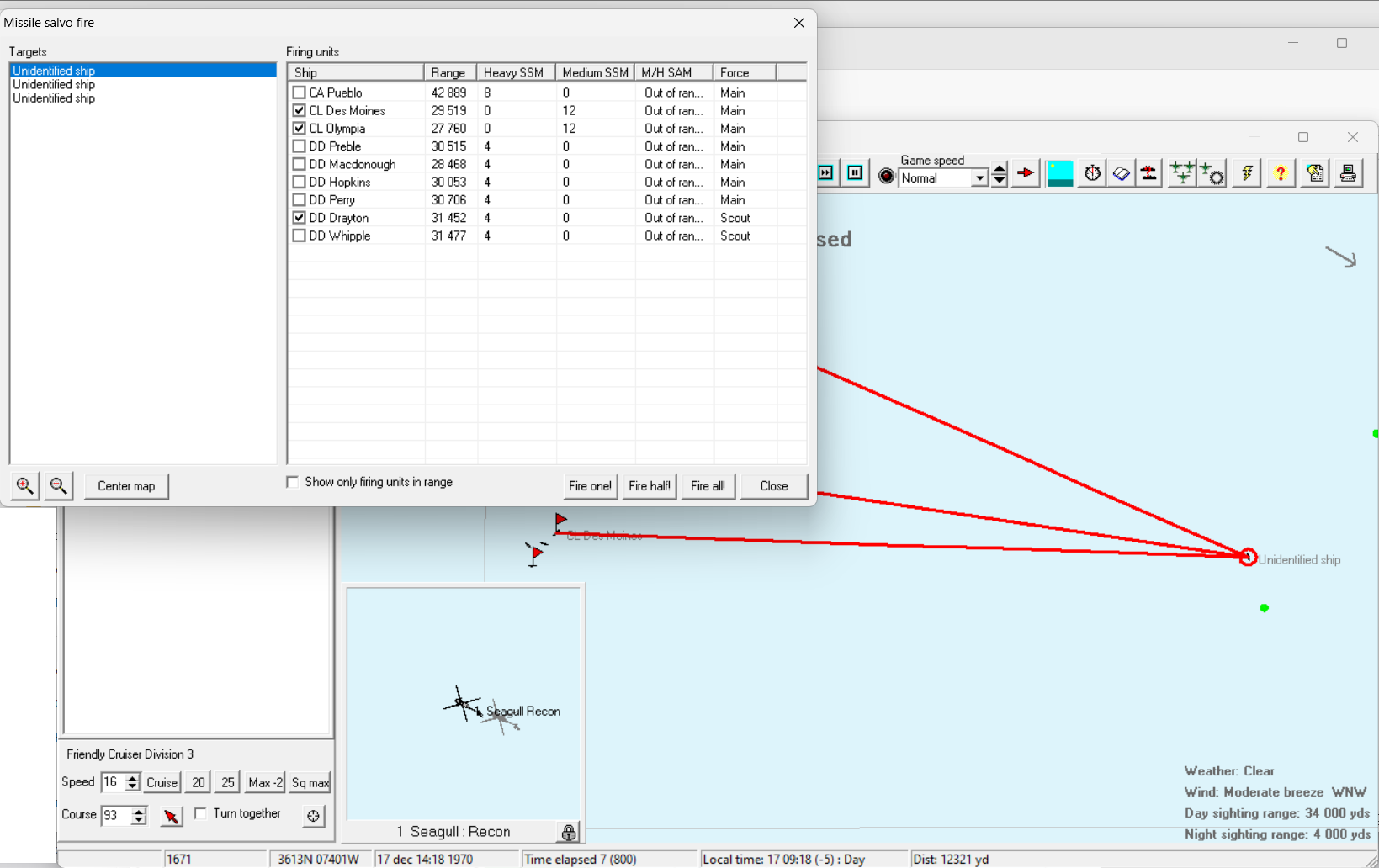After the mid-1940s, jet aircraft enter the scene. Existing aircraft carriers will have to be rebuilt to handle jet aircraft, adding blast barriers and angled flight decks. As carriers will need to be larger to handle heavier jet aircraft, carrier sizes will grow. Eventually, supercarriers of upwards of 60,000 tons will be the norm.
 A carrier in the jet era.
A carrier in the jet era.
The battleship will still have a role to play, but it will be eclipsed as the ultimate expression of naval might by the large aircraft carrier. Jet aircraft will eventually evolve to have allweather and day and night capabilities, but already in the final years of WW2, the missile makes its appearance. At first primitive, with limited range and easy to counter with jamming, guided missiles can still cause grievous harm to surface vessels. This leads to the development of anti-aircraft missiles to give ships longer range air defences against all these threats.
Existing ships can be rebuilt, or completely new missile cruisers constructed. Anti-ship missiles do not consume all that much space, and can be accommodated by most ships. On the other hand, anti-aircraft missile systems and their attendant radar arrays are huge and will take up most of the space on a ship. This will tend to lead to missile cruisers specializing into either anti-aircraft or anti-ship roles.
 A fairly typical cruiser in the missile age.
A fairly typical cruiser in the missile age.
Missiles are initially limited to line of sight, but with improved guidance systems will get longer ranges and even over the horizon capabilities. On the topic of missile combat and missile damage, real world historical experience is limited. A number of ships have been hit by missiles, with a wide variety of results, some being sunk by one missile hit, others taking multiple hits to sink. But there are no examples of large, armoured warships being hit by missiles, so the effectiveness of heavy anti-ship missiles on a dreadnought battleship is really unexplored. That means that the game relies more on informed speculation in the area of missile effectiveness than with, for example, torpedo or shell damage.
Missile damage in game is simulated with more variability than other types of hits. Generally, missile hits are treated as very large HE shells in game with additional incendiary effects (unspent fuel starting fires). They will do more limited damage if they hit the armoured belt, but can do substantial damage to superstructures, and often cause fires.
 Incoming missiles
Incoming missiles
With additional technical development, you will be able to set up strikes from multiple platforms, including land missile batteries and missile submarines.
 Setting up a missile strike on enemy ships.
Setting up a missile strike on enemy ships.
This concludes the Dev Diaries for Rule the Waves 3. We hope these diaries have given you some insight into the breadth of the wargaming experience this game can offer. Over 80 years of naval warfare, starting with ironclads duking it out at 1000 yards and ending with missile shots from over the horizon. No other game covers such a long period of modern naval warfare, or gives such an insight into how technology, ship design and tactics interact and develop over time.


 A carrier in the jet era.
A carrier in the jet era. A fairly typical cruiser in the missile age.
A fairly typical cruiser in the missile age. Incoming missiles
Incoming missiles Setting up a missile strike on enemy ships.
Setting up a missile strike on enemy ships.



